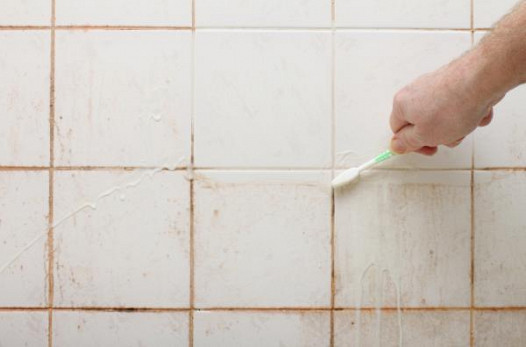Preventing Water Damage in the Bathroom
Preventing Water Damage in the Bathroom
Blog Article
What are your opinions regarding Common Causes of Water Damage in a Bathroom?

The bathroom is exceptionally prone for moist build-up and prospective water damages due to the regular use water in it. This article provides basic examination techniques to aid spotting water damages threats.
The frequent use of water in the restroom makes it very at risk for moist build-up as well as possible water damages. By inspecting it frequently, you can lower water relevant damages.
The adhering to collection of evaluations is simple to execute and must be done as soon as in every three months in order to keep your shower room healthy and to prevent prospective water problems caused by the bathtub, the shower, pipe joints as well as plumbing, sinks, closets, and the toilet
Do not disregard doing these examinations and be extensive while doing them. Remember that these straightforward assessments can conserve you a lot of money by supplying very early signs for water damage
Tub as well as Shower
The shower and also bathtub require special interest and also upkeep. Examine the tiles as well as change if cracked. Ensure that there is no missing out on grout between the ceramic tiles. Evaluate and replace fractured caulking at joints where the walls meet the flooring or the bath tub. Obstructed drains pipes as well as pipelines issues will certainly stop the bath tub from drying and may suggest major troubles beneath the tub. Talk to a professional immediately to avoid architectural damages. Take notice of stainings or soft locations around the bath tub wall surfaces as they might show an inner leakage.
Plumbing
Signs for water damages are tough to detect since most pipes are installed inside the walls.
Pay special focus to floor covering and also wall surfaces dampness as well as spots as they may indicate an unnoticeable plumbing issue. Check moisture levels in adjacent areas too.
Sinks and also Cabinets
Sinks as well as cupboards are subjected to moisture and humidity day-to-day and also are usually ignored. Check on a regular basis under the sink as well as on the counter top above it. Repair any kind of drip in the catch as it may suggest drain troubles. Browse the sink, slow draining pipelines might indicate an obstructed drainpipe. Replace sink seals if they are fractured or loose.
The Toilet
The commode is a susceptible water junction. Examine the water lines as well as search for leakages around the toilet seat, in the tube, as well as under the water tank. If you identify any type of signs of wetness on the floor around the commode, check for leakages in the toilet rim and also storage tank seals.
Be aware that hanging commode bowl antiperspirants enhances the opportunities for blockages.
How to Prevent Water Damage in Your Bathroom?
Water damage repair is an expensive, meticulous, and lengthy process. Unfortunately, bathrooms are the most susceptible rooms to water damage due to toilets, showers, and sinks. Pipes and fixtures wear out over time and are not immune to damage. But all is not lost, as there are ways to prevent water damage from occurring in your bathroom.
Check Your Plumbing
Nothing lasts forever, especially pipes, which can rust and begin leaking over time. You should periodically conduct pipe inspections and pay attention for any musty smells or water stains that may indicate you need water damage repair. Here are some things to check:
Frequently test valves for your toilet, shower, and sink to ensure they are properly working. Check faucet supply lines hidden under vanities and replace when needed. Replace cracked or deteriorating caulking along sinks, tubs, and showers. If you notice a clog in your sink, call in a professional. Since you can’t check the pipes in the wall, keep an eye out for stains, drywall bubbling, musty smells, and excess moisture; if the bathroom is on a second level, check the ceiling of the room directly below for these signs. Don’t Overwork Your Toilet
One of the most common reasons bathrooms need water damage repair is due to overflowing toilets. Save yourself the hassle of cleanup by being mindful and not pushing your toilet to extreme limits. If you have young children, it is especially important to keep an eye on them when they are in the bathroom and to teach them how to avoid clogging the toilet. Here are some more tips to help prevent your toilet from overflowing:
If you have a septic tank, only use septic-safe toilet paper Do not flush anything down the toilet besides toilet paper; items like diapers and sanitary napkins will clog the piping Pay attention to your toilet’s water level: If it’s low, it could mean it is partially clogged or that there is a crack in the toilet bowl Maintain Your Shower/Tub
Replace showers or tubs with cracks or other damage; even hairline cracks can allow water to seep in and cause damage. Grout and caulk help prevent water from seeping into walls and floors, so repair them if they are chipped, cracked, or deteriorating. Replace torn shower curtains or shower doors with seals that no longer work. Dry the floor and drain water from the tub immediately after use to prevent damage from sitting water. https://www.alure.com/home-improvements-blog/resources/how-to-prevent-water-damage-in-your-bathroom

We had been shown that editorial on How to Repair and Prevent Bathroom Water Damage through someone on our other web address. If you please take the opportunity to distribute this content if you enjoyed it. I am grateful for your time. Visit again soon.
Detail Report this page